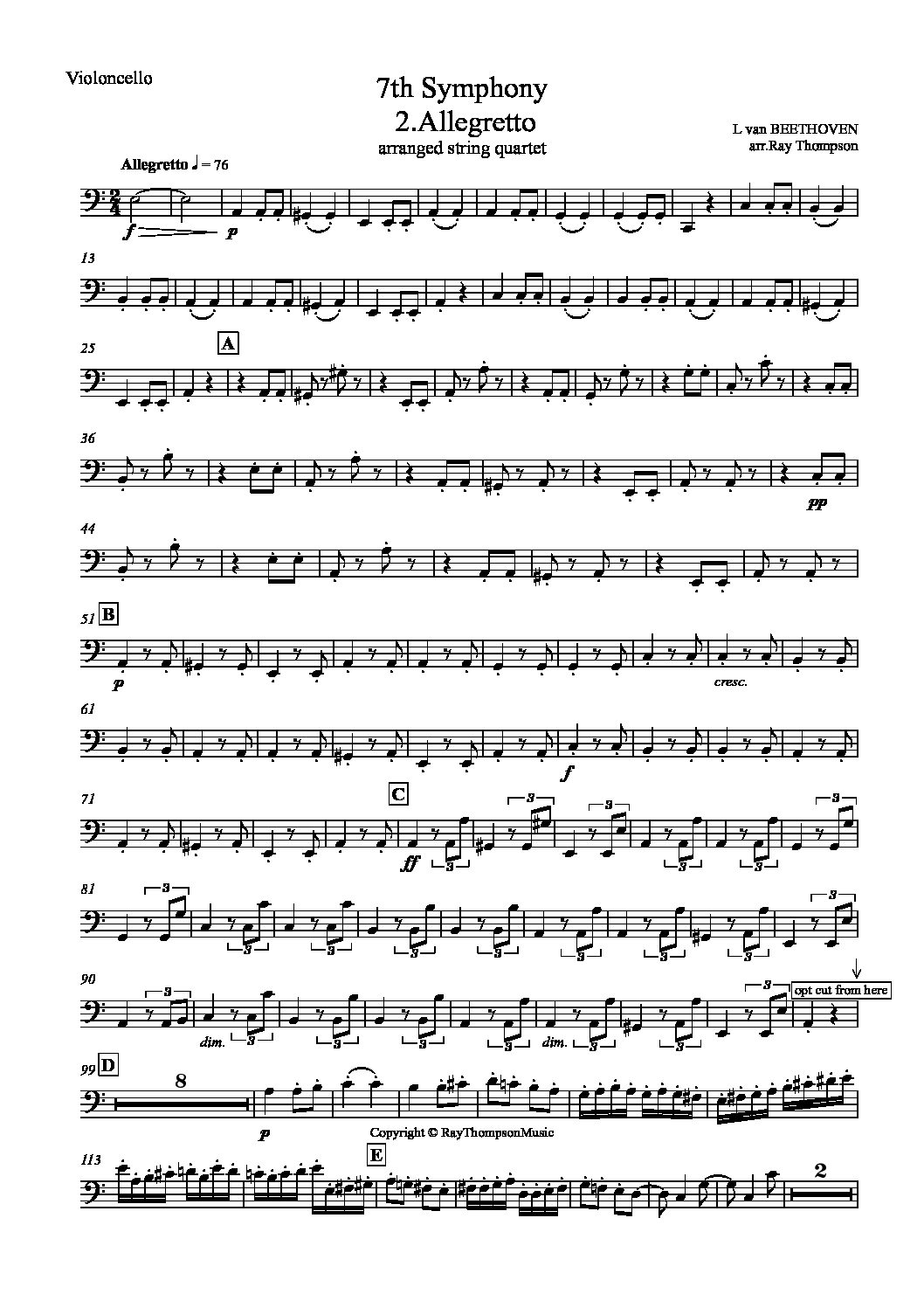
We urge our readers to study this movement and gain an idea of how Beethoven is not moving us through notes, but using the notes to move our souls, through ideas. Beethoven was concerned that the tempo could be taken too fast, and said later on, that he wished the tempo to be changed to “Andante quasi Allegretto”. The second movement is marked “allegretto”. The second theme reappears at 7:40, and is followed by a return to the main idea, but fragmented, like fading memories. At 6: 20 this becomes a “fugato”, based on the "feet" identified by Berlioz. At 4:08 the characteristic rhythm reappears, as the music explores different ways to resolve the double lydian paradox (4:20-4:50).Īt 5:13 the theme pair reappears, in animation. In the third variation (beginning 2:42), the interaction of the two ideas is intensified, with kettle drums pounding, until it dies down.Īt 3:38 a second theme enters, like a happy memory, in canon. In the second variation (beginning 1:55), this new singing idea grows. It is as though the ancient and rigid sense of duty has been joined by a more modern sentiment, that allows the soldiers and society to grieve over fallen comrades. The first variation on the theme (0:58 in this recording), introduces a bel-canto singing melody in the violas and cellos-a lament. It repeats the note D 16 times before moving on. The 2nd movement of the symphony is also in duple time (2/2), and stresses the third beat: It is a march, but it also corresponds to the old dance form, the Pavane, which is in duple time, and stresses the third beat of the measure. If it seems complex, just try singing, or listening to the opening lines against this chart. In this representation, L is for long, s for short, and C for caesura. The rhythm of the 2nd movement is processional, like a funeral march, and is organized like verses, or stanzas, of poetry. This included the “dactyl”-a long and two shorts the “spondee”-two longs as well as the “caesura”-a single syllable filling an entire foot. Thus, any feet that added up to the equivalent of four short syllables, could be used in the same line of poetry.

In Greek poetry, a long syllable lasted for twice as long as a short one, and thus a "foot" in poetry functioned much like a measure in music. The rhythmic pattern consists merely of a dactyl followed by a spondee played relentlessly.” “A simple rhythm is again the principal cause of the extraordinary effect produced by the Allegretto.

Poetic literacy was high enough in the early 19th century, that a romantic composer, Hector Berlioz, made an important point: The movement begins and ends on a harmony that theory demands has to be resolved, a 6/4 chord. We believe that this movement celebrates those veterans. However, Beethoven was not the kind of man to casually dismiss sacrifice, and the concert was dedicated to veterans. His sentiment had existed long before 1813, as had the wars! Napoleon was being repelled, and the symphony is overall joyous. We find no reason to believe that the deep emotion of this movement was founded on anything but what he said it was. "We are moved by nothing but pure patriotism and the joyful sacrifice of our powers for those who have sacrificed so much for us." Beethoven, who conducted the premier in December of 1813 for the veterans of the Battle of Hanau, made an address to these veterans, saying: Much speculation has taken place over what personal agony it reflects in Beethoven’s life, especially since sketches for the movement predate the symphony by several years. 7 had to be repeated during the world premier, and it remains one of the most beloved moments in music until this day. DAILY DOSE of BEETHOVEN (November 5, 2020)


 0 kommentar(er)
0 kommentar(er)
